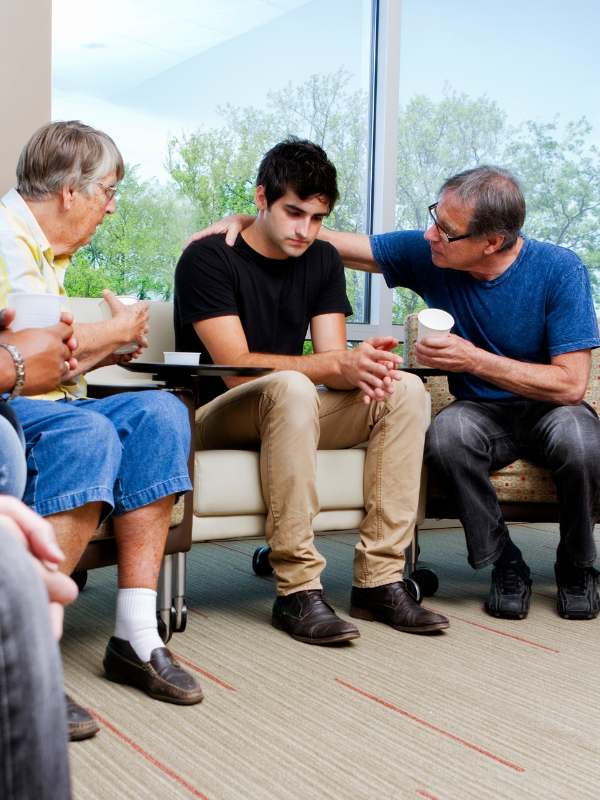How To Get A PTSD Diagnosis

Just like you go to a medical doctor when something is physically wrong, you see a mental health professional when someone is off in a mental capacity.
A PTSD diagnosis often comes from a medical provider, and someone must undergo a few different evaluations to obtain a formal PTSD diagnosis.
Criteria for PTSD Diagnosis
According to the Diagnostic and Statistical Manual of Mental Disorders (DSM-5), published by the American Psychiatric Association, a PTSD diagnosis requires someone to have at least the following:
- One re-experiencing symptom
- Three avoidance symptoms
- Two negative alterations in mood or cognition
- Two hyperarousal symptoms
These symptoms must occur for a month or more and affect the person’s ability to perform everyday activities.
Signs and Symptoms of PTSD
Anyone who has experienced a traumatic event will experience short-term symptoms. Luckily, most people who experience trauma won’t develop chronic PTSD.
The course PTSD will take varies from person to person. Typically, symptoms begin within three months to a year of the traumatic event. For example, someone may recover in six months, whereas another person will have symptoms that last much longer. For a few people, this condition can become chronic.
What Causes One Person to Develop PTSD While Others Don’t?
Individuals are more likely to develop post-traumatic stress disorder when they feel isolated and alone. The lack of built-in support in their daily lives tends to have more intense physical and emotional reactions to trauma.
Also, having more than one mental illness can influence the risk of developing PTSD. Generalized anxiety disorders, major depressive disorder, and a history of substance abuse can all increase the chance of a PTSD diagnosis.
Re-Experiencing Symptoms
Re-experiencing symptoms can cause issues with someone’s day-to-day life. These symptoms can start from their subconscious thoughts and feelings.
Certain words, objects, or situations can trigger a memory of the traumatic event and re-experiencing symptoms.
These symptoms can include:
- Flashbacks – reliving the traumatic situation, again and again, including but not limited to physical symptoms of racing heart or sweating.
- Nightmares and bad dreams
- Frightening thoughts
Avoidance Symptoms
Avoidance can cause a person to change their routine. Avoidance symptoms trigger and remind the person of the traumatic event. Symptoms of avoidance can include:
- They purposefully avoid places, events, or objects that remind them of their traumatic experience.
- Avoiding thoughts or feelings related to the event may include self-numbing through substance abuse.
Arousal and Reactivity Symptoms
Arousal symptoms typically remain constant instead of being triggered by an outside influence. These symptoms can make someone feel stressed and irritable. In the worst case, the person can become hypervigilant and constantly on edge. These symptoms can make it challenging to complete daily tasks such as sleeping, eating, or concentrating.
Some classic arousal symptoms include:
- Being easily startled
- Trouble sleeping
- Uncontrollable temper
- Feeling tense and on edge
Cognition and Mood Symptoms
Cognition and mood symptoms can be challenging to detect because they result from substance abuse and physical injury. These symptoms can make people feel alienated or detached from friends or family. It should be noted that it’s natural to experience these symptoms a few weeks after a dangerous event. But when these symptoms last more than a month, they can significantly affect someone’s ability to function.
Possible cognitive and mood symptoms include:
- Trouble recalling specific parts of the traumatic event
- Overall negative thoughts about themselves and the world
- Lost interest in activities they once enjoyed
- Distorted feelings of shame and guilt
Post-traumatic Stress Evaluations
There are two common types of PTSD evaluations: structured interviews and self-report questionnaires. Regarding PTSD, assessments include responding to questions about your thoughts, feelings, and behaviors.
It’s common for a formal PTSD diagnosis to take several evaluation steps.
Frequently Asked Questions About PTSD Screenings and Assessments
No matter your situation, you should always feel empowered to ask questions. Your medical provider should be able to tell you what their assessment will include, how long it will take, and how the results will be used.
Q: What is a screen for PTSD?
A: A screen consists of a short list of questions about your thoughts, feelings, and behaviors since the traumatic occurrence. The goal of the screening isn’t to diagnose someone with PTSD but to give the treatment provider further understanding of your unique situation. These types of tests take about 15 to 20 minutes to complete.
Q: What should I expect during a PTSD assessment?
A: If, after your screening, your provider thinks you may have PTSD, your next step is a more in-depth assessment. You can expect to be asked questions about potentially traumatic events during an evaluation. Sometimes, a provider may also ask to speak with your spouse or family members closest to you about what they’re seeing and feeling. It’s also possible for a provider to perform physical examinations to assess the potential health issues that can be affected by trauma.
Q: How long will a PTSD assessment take?
A: Most PTSD assessments take one to two hours. However, if the provider needs more information for legal reasons or a disability, this process can take longer.
It’s vital to see someone who is trained specifically on PTSD assessments. If your provider doesn’t carry this specialization, you can ask for a referral to one that does.
The Difference Between Children and Adults
The above symptoms address the typical reaction in adults. But children and teenagers tend to react a little differently to traumatic events.
When young children under the age of six experience trauma symptoms, they may deal with the following:
- Wetting the bed, even after learning to use the toilet
- Forgetting or being unable to speak out loud
- Acting out the scary event during playtime
- Becoming unusually clingy with their parent or another adult
Children older than six are more likely to show similar symptoms to adult symptoms. Additionally, they may seem extra disruptive, disrespectful, or destructive.
Feelings of guilt may be present in older children and teens for not preventing injuries or deaths. They can also have stronger urges or thoughts of revenge.
Treatment for PTSD
You do not have to manage your PTSD alone.
Finding appropriate treatment for PTSD can help you regain a sense of control over your life. The most common treatment for PTSD includes some form of psychotherapy and, in some cases, can also include medication-assisted treatment.
Working with a combination of behavioral therapy and medications, someone can learn:
- New skills to address and manage PTSD symptoms
- Provide a basis for a new point of view to improve the way you see yourself and the world
- Learning new ways to cope with any symptoms that may arise, either now or in the future
- Treating other issues commonly associated with trauma experiences, including depression, anxiety, and substance abuse.
Finding PTSD Treatment That Works for You
Anyone who suspects they are struggling with PTSD should seek treatment from a trained professional. Finding a treatment center that can address your PTSD symptoms and other potential mental illnesses is vital to healing.
Contact the team at The Sylvia Brafman Mental Health Center for experienced dual diagnosis treatment providers.
Sources:
- Mayo Clinic – Post-traumatic stress disorder (PTSD)
- National Institute on Mental Health – Post-Traumatic Stress Disorder
- U.S. Department of Veterans Affairs: PTSD: National Center for PTSD – How Is PTSD Assessed?



